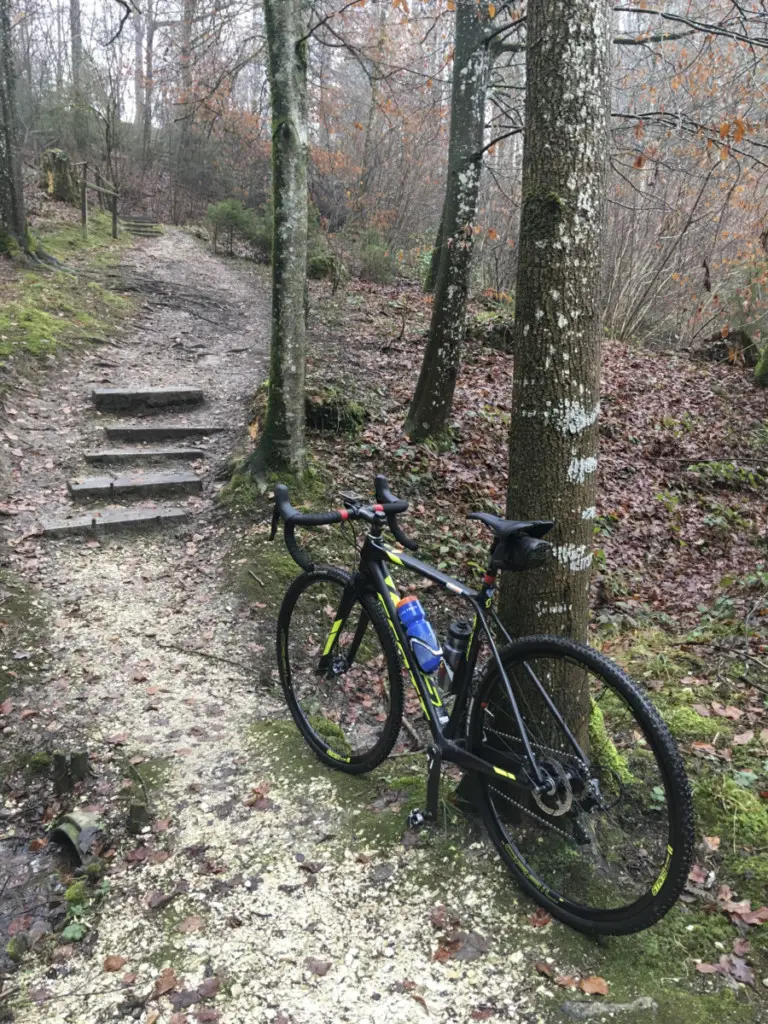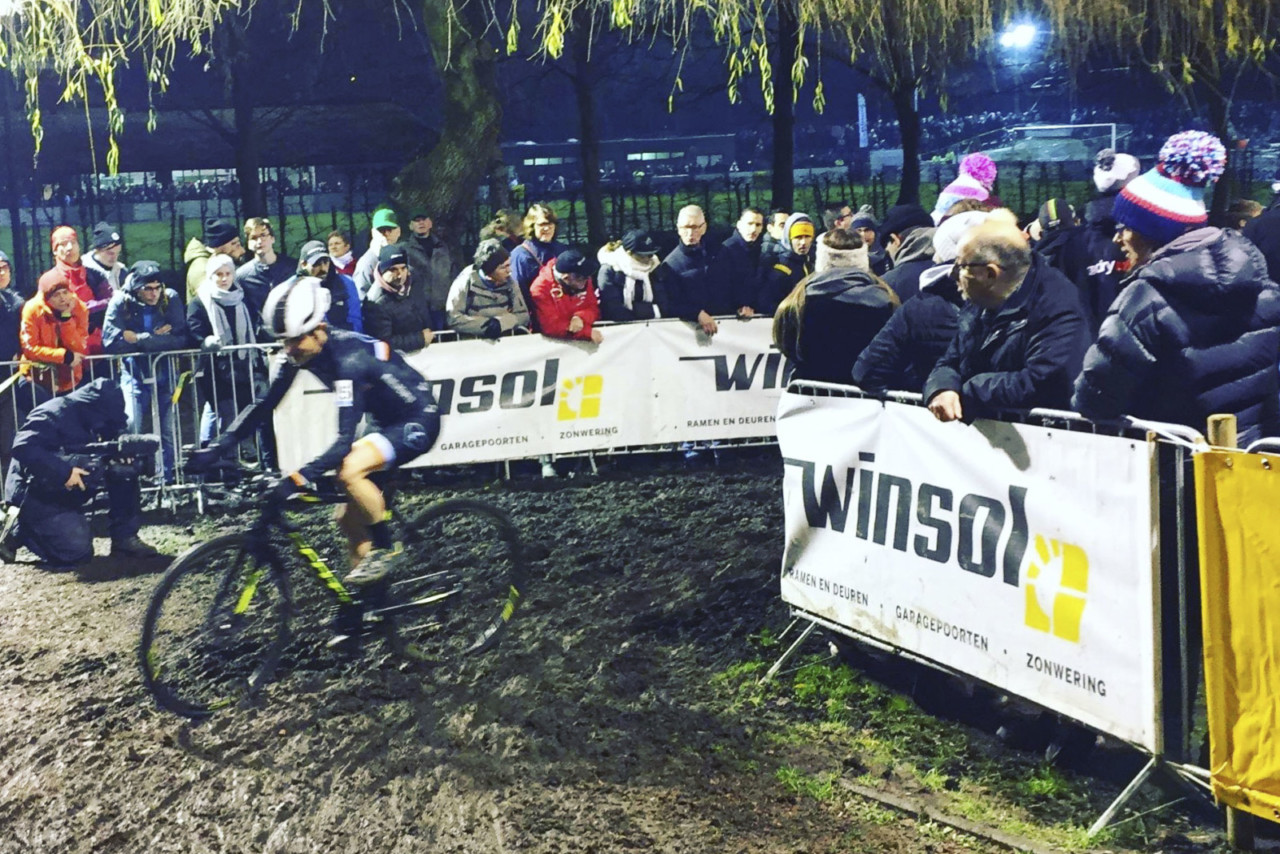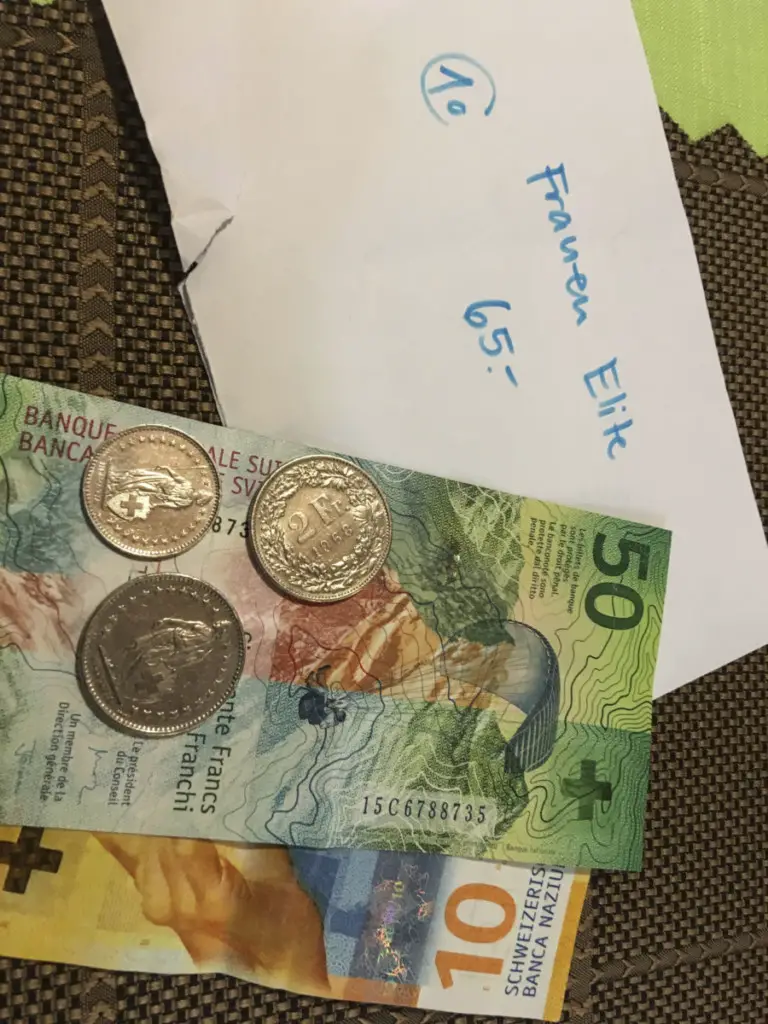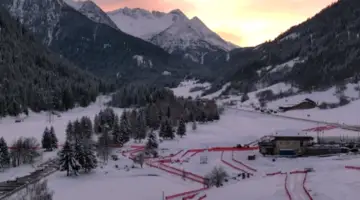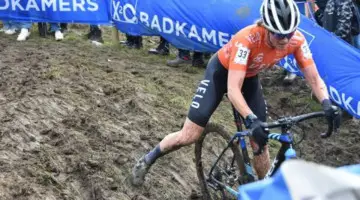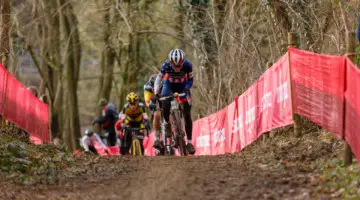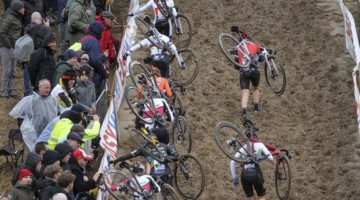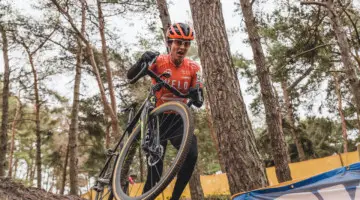From just before Christmas to New Year’s Day defines Kerstperiode in Belgium. The week is both the epicenter of the European season (save Worlds) and an anomaly on the Belgian calendar.
The racing during Kerstperiode is epic but has an entirely different feel from the rest of the Belgian season.
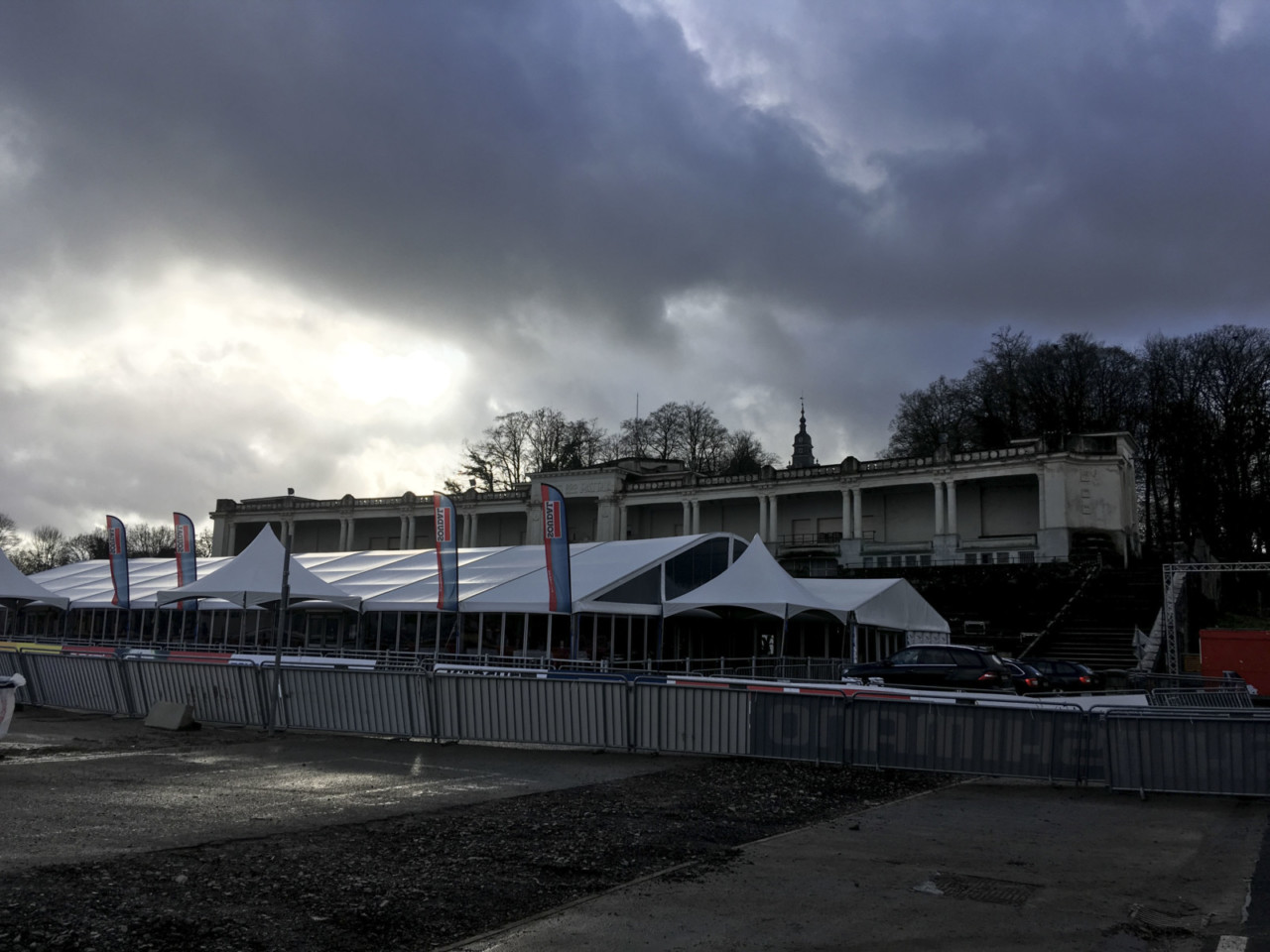
Zolder and the other Kerstperiode races had a different feel from the usual Belgian ‘cross circuit. Corey Coogan Cisek Rider Diary © C. Coogan Cisek
English Invasion
The Americans, Canadians and British came in force for Kerstperiode—the Americans staggering in on the heels of Nationals, some literally bringing the mud of Louisville with them. Beth Crumpton captured the British influx by tweeting #britishcxmassive, which I think about sums it up.
As with World Cups, the Kerstperiode races are infinitely easier for English speakers to manage. The written race material often has an English translation and officials and volunteers do not assume Dutch is your native language. It’s hard to be lost among a bunch of other Americans. If it takes 2 to find registration, that’s no problem since there are more than 10 of us.
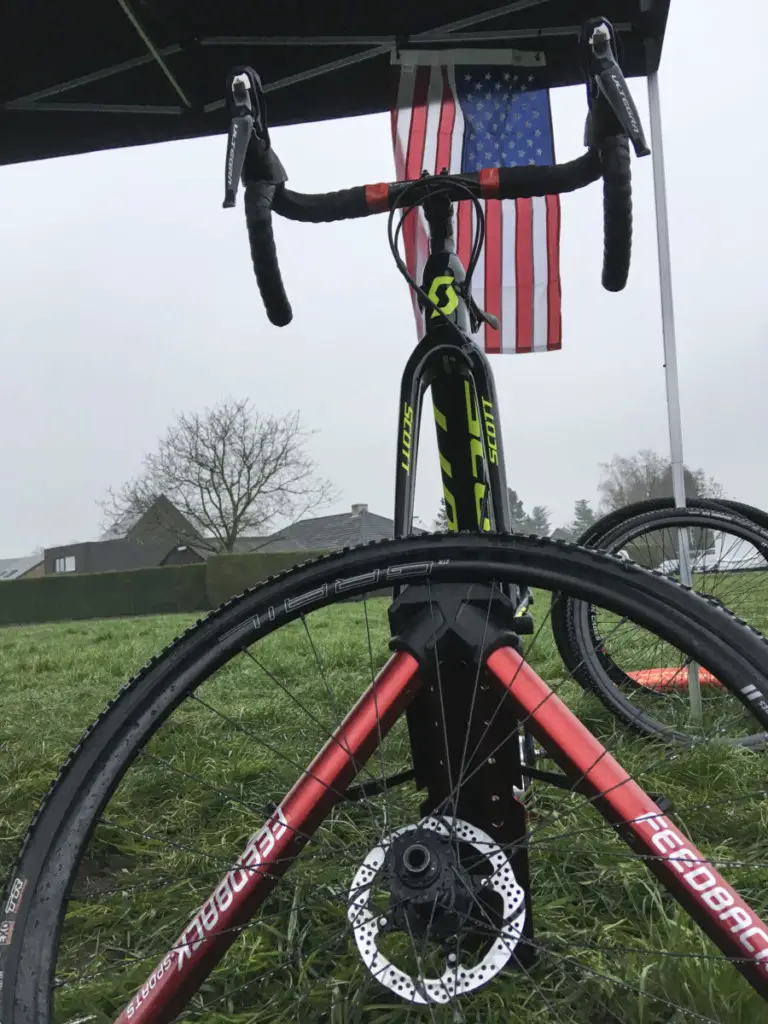
Kerstperiode had a more American vibe, during warm-ups and in general. Corey Coogan Cisek Rider Diary © C. Coogan Cisek
Outside of Kerstperiode, I am acutely aware of being a visitor to someone else’s race culture, a minority. During Kerstperiode, I am but a part of a very large international party.
Despite the presence of Americans, I am still in “Dutch mode” at the races. When I see someone I don’t know, I greet them in Dutch. Yet, oftentimes it turns out that the individual is British and she gives me an alarmed, “I don’t know what is being said” look. In fact, around the venue, with French, Spanish, Swedish, German, etc. being spoken, English is often the default language. One hears a lot of English at the start line.
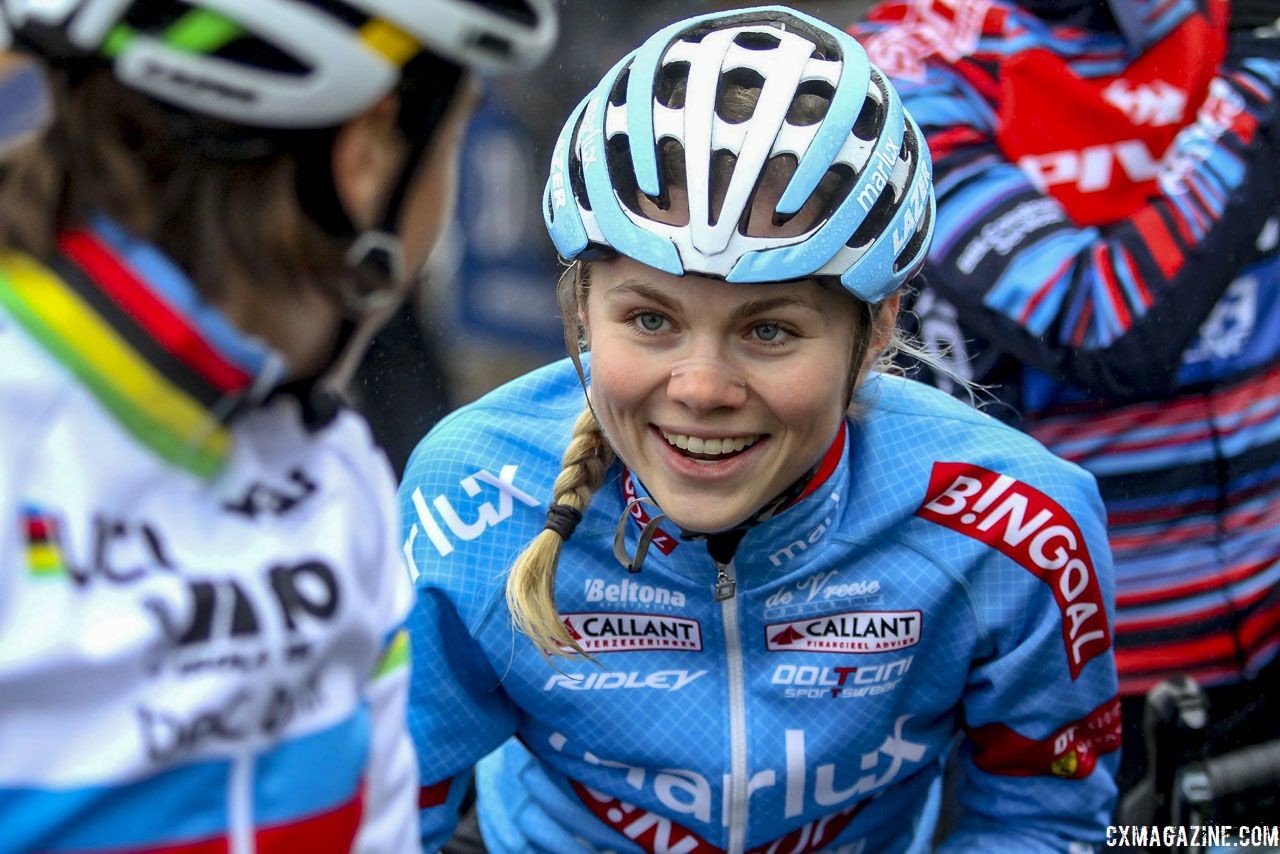
Sometimes even the Dutch-speaking riders chat in English at the start line. 2019 GP Sven Nys, Elite Women – DVV Verzekeringen Trofee. © B. Hazen / Cyclocross Magazine
The sudden influx of Americans was actually a bit of sensory overload for me. I spent most of the last month living alone, racing without a team and isolated by language. I did group rides where I was the only native English speaker. I was totally reliant on hand signals because the shout “stokje” (stick) meant nothing to me.
With the exception of social times with my support team, my day-to-day life was in Dutch. Since I cannot truly converse in Dutch, and the Flemish are a reserved people anyway, I wasn’t having casual conversations with strangers.
Compared to the Dutch and Flemish, Americans are anything but reserved. I experienced this when I returned home to Minneapolis last winter. Who were these people speaking to me while waiting in line or on public transportation? The Flemish are wonderful, hospitable people, yet when you encounter one biking or walking on the street, your odds of getting a wave or a “dag” (good day) are less than 50/50.
Cloudy With Rain in Namur
I was unexpectedly added to the American squad for the Namur World Cup when a couple of riders delayed their trip over.
Namur happens to be the first Belgian race I ever watched on the internet. It was the race that stole my heart and made me want to come over here. I should have been delighted to race it, but on race day, my mood as glum as the wet and raining weather.
Sometimes, when seeking results, it’s easy to lose perspective. At the Namur start, I looked up at the beautiful and imposing Citadel breaking through the clouds. I had just come off of two surprisingly strong results in Overijse and Zonhoven and wanted similar in Namur. Yet, I needed to remind myself, “I am in Belgium, racing the World Cup I have dreamed of racing. Look up. Don’t miss the moment.”
Living in a foreign country, racing the toughest cyclocross races in the World … it is not always rainbows and butterflies. At the beginning of Kerstperiode, I was in a funk. I felt indescribably off, no longer having tons of fun.
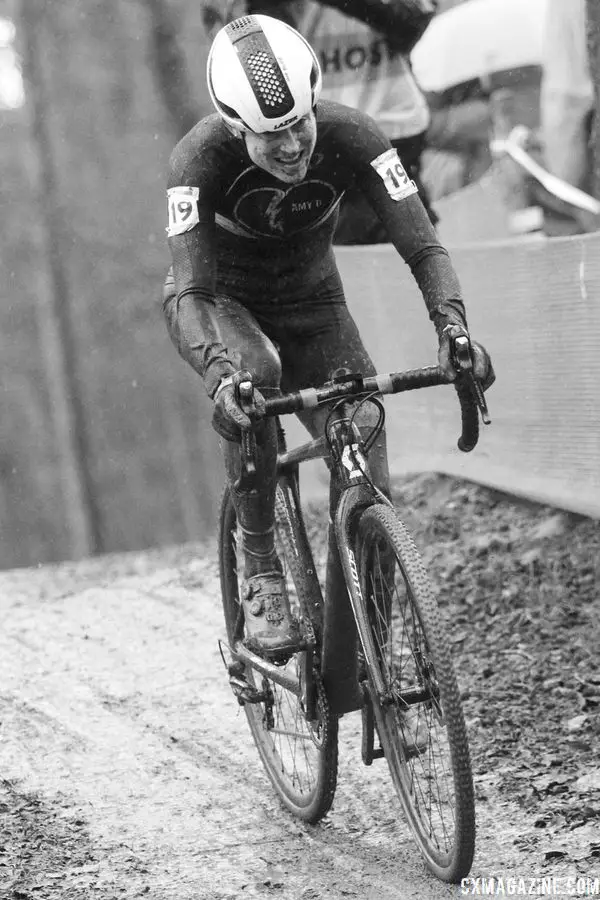
Namur was a bucket list race for Coogan Cisek. 2018 World Cup Namur. © B. Hazen / Cyclocross Magazine
Part of it is that one races hard in Europe. You know that blood in your mouth taste? I get that every … single … race in Europe. I’ve also crashed no less than four times in the last two weeks. Racing sometimes feels like body-versus-bike-versus-ground combat.
While my day-to-day life in my Oudenaarde Airbnb has been pretty ideal, there have been weekend Airbnbs that have been less so. Likewise, I have done a lot of solo driving, navigating and otherwise getting through day-to-day life.
When I’m in a good mood and rested, this as a grand adventure!
Other times, post-race, when I am tired, dirty and my possessions are in a damp tangle in the back of the car, when the Airbnb reflects the budget price I paid rather than the surprisingly glowing reviews, it’s tougher.
My result in Namur matched my mood: okay with a side of meh. I finished in the 70s on par with where I was seeded, but it was, at best, an ordinary day for me.
I had to work a bit to reset my headspace. I had to figure out what as getting under my skin, and then figure out what to do about it. Mostly, I did some solo rides over the beautiful countryside here, ate some amazing Belgian croissants and was patient with myself.
Kerstperiode Field Sizes
Namur had an enormous women’s field with over 80 starters. In the days leading up to the event, the UCI boasted about its size, but I believe the field size is a symptom of a problem. The numbers are so high because neither the women U23s nor the Juniors have their own race. There were four races on the day: three for men and one for women.
Loenhout had over 60 women starting, despite having a separate Junior Women’s race earlier in the day. The Women’s field in Diegem was capped at 70 and filled prior to the event. These numbers clearly demonstrate that a Junior Women’s race is sustainable in Europe.
The enormous Kerstperiode fields make for a different racing experience for those of us with late call-ups. In America, courses are carefully designed to narrow gradually with long arcing turns early in the lap.
In contrast, Belgium’s historic courses make no accommodations for field size. For example, Diegem goes through a narrow gate just before the infamous off-camber. During Kerstperiode, those not in the top 20 at the first bottleneck can expect an extended run—or walk—while things sort out.
Kerstperiode requires extreme patience, an eye for less-than-obvious passing opportunities and clean riding. If you put a foot down, you pay for it with not one or two positions lost, but five. As the saying goes, “If you are not going forward, you are going back.”
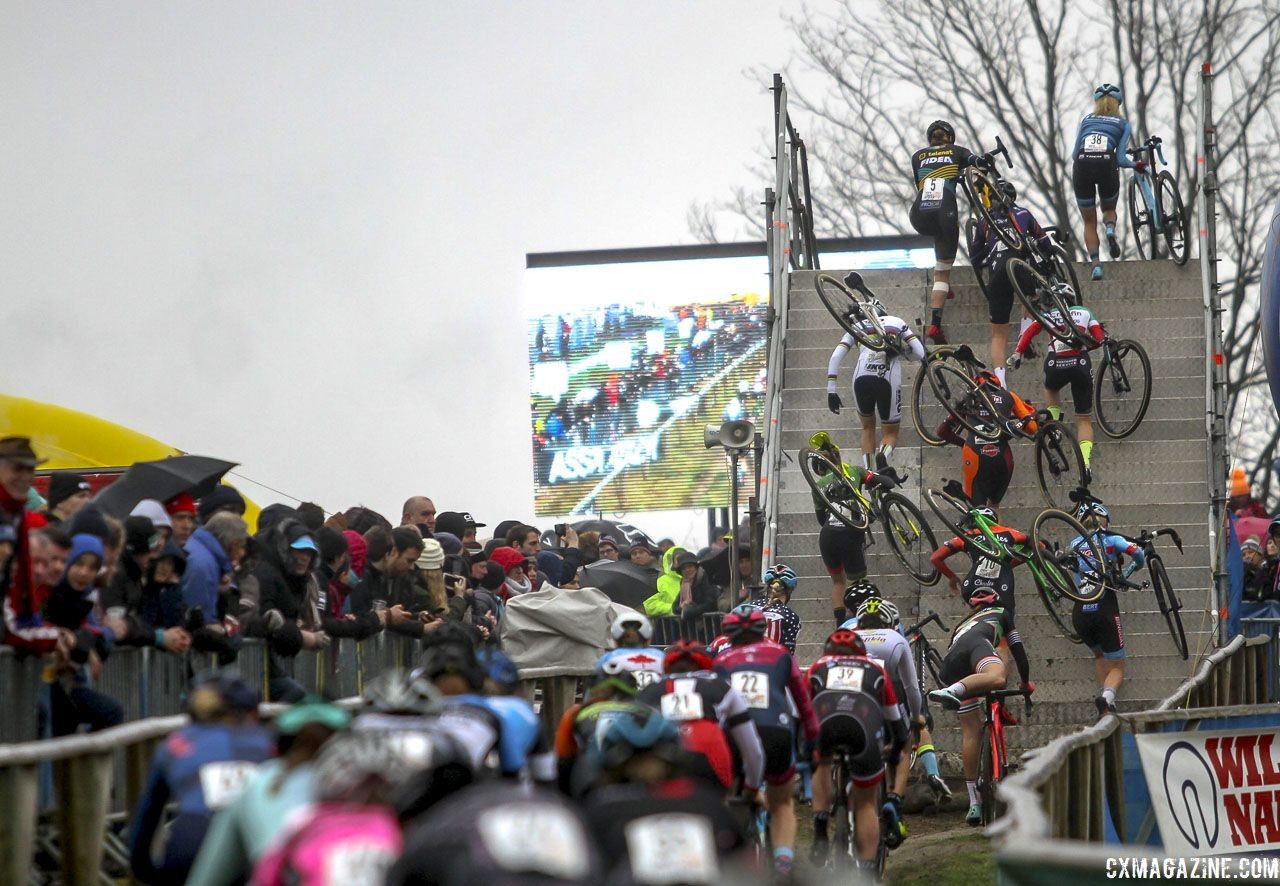
Kerstperiode racing is very hectic. 2019 GP Sven Nys, Elite Women – DVV Verzekeringen Trofee. © B. Hazen / Cyclocross Magazine
Namur’s less-than-stellar result had more to do with making many little mistakes than bad fitness or form. In Loenhout, I had a good race going until I crashed just before the final lap. The crash caused a broken shifter, some lost skin and a piece of my skinsuit embedded in my leg. (No worries, medical removed that with some tweezers!)
Nevertheless, knowing I had had a good ride going buoyed me. My confidence and happiness were renewed. In the next race, Diegem, I had a clean ride, rode blood-in-the-mouth hard and finished 35th.
Road Trips
Last year, I found Kerstperiode races a bit frustrating. In the average Belgian race, I am gridded such that I can reach out and touch at least the second row. Thus, it is disheartening to start way back and lose minutes on the first lap. This, and the fact that I did not anticipate qualifying for Kerstperiode World Cups, led me to plan some racing outside of Belgium during the block. My husband came over for a visit and he was able to help me with the travel and play mechanic and soigneur.
I did two UCI C2s: Pfaffnau GP Luzern in Pfaffnau, Switzerland on December 26 and Grand Prix G.I.L. Immobilière in Pétange, Luxembourg on January 1.
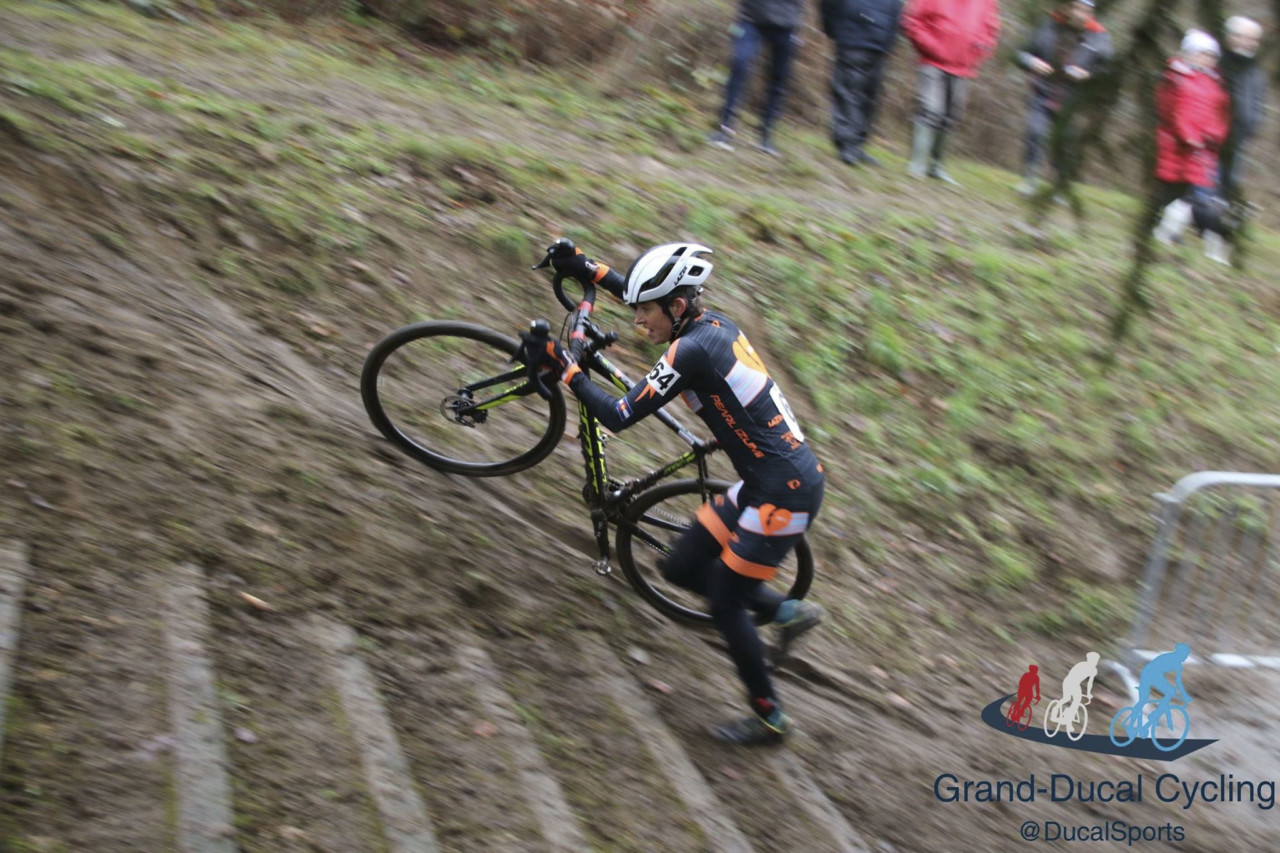
Coogan Cisek got some experience racing outside Belgium over the holidays. Corey Coogan Cisek Rider Diary © Grand Ducal Cycling Photography
As in North America, Europe has some lesser-attended C2s known to be good for those seeking points. Accordingly, I recognized many of the riders in Pfaffnau and Pétange as Dutch and Flemish racers who regularly finish around me or in slightly in front of me in Belgium.
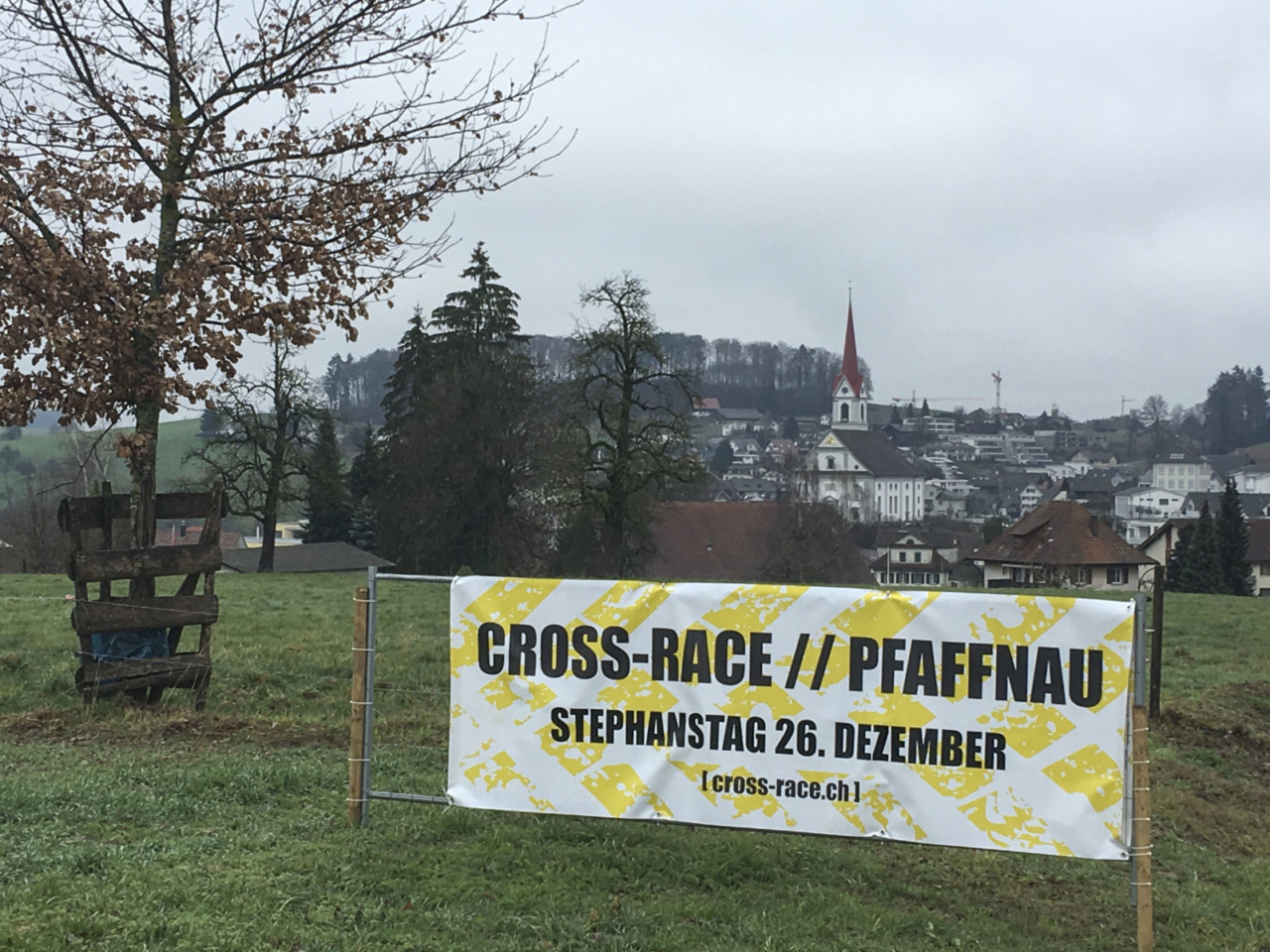
One of the races Coogan Cisek traveled to was in Pfaffnau. Corey Coogan Cisek Rider Diary © C. Coogan Cisek
Mostly Juniors and U23s, they arrive with their parents rather than their teams. It is a reminder of the role that parents play in these young women’s cycling lives. Even the youngest ones have a wrapped camper with their face and name on the side or at least a van and wrapped trailer. Parents carry generators, pressure washers, and tents, and are pros at cleaning off all the mud in the parking lot.
Some of these girls ride semi-professionally or on development teams, which means their parents wear team jackets. In fact, I watched one young woman make the transition from a development team to pro on January 1. Her crew didn’t change; her parents had brand new jackets in Luxembourg!
After racing World Cups and major Belgian races, these races were like taking a step back into the bush league. Both were home-grown, local affairs with races for children, newbies, amateurs and Masters.
The fans were racers’ families and friends. The courses and taping lacked a professional feel. In short, neither Sporza, nor massive gate revenues were present. It was enjoyable and novel, and I appreciated both venues’ hilly and muddy terrain, but it was miles away from the feel of racing in the Superprestige, DVV and Soudal Classics races.
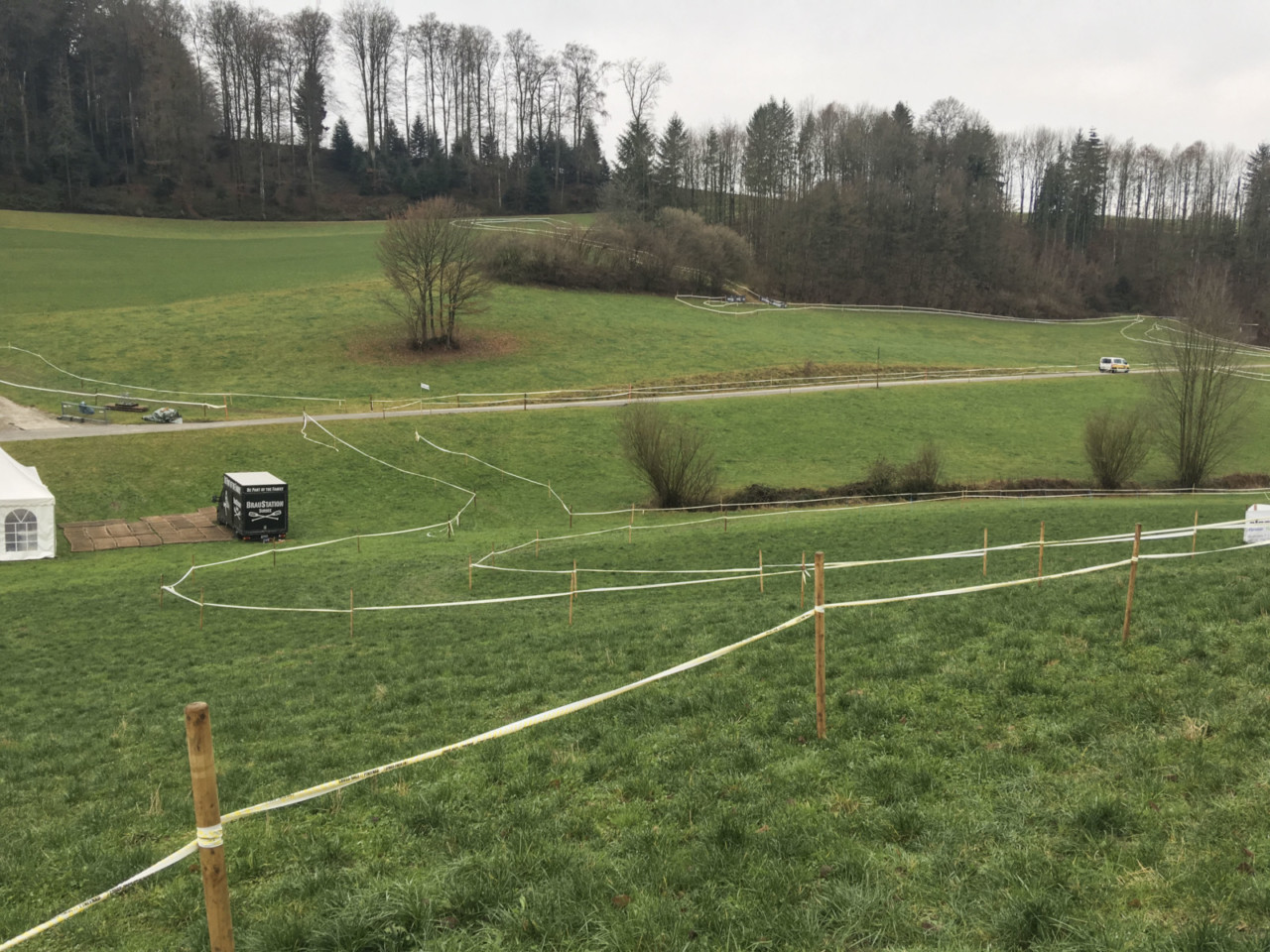
Races such as the one in Pfaffnau had a less pro feel than the big-time Belgian series. Corey Coogan Cisek Rider Diary © C. Coogan Cisek
In terms of results, I earned but one UCI point in Switzerland, yet start money and prize winnings (always appreciated!) helped pay for the trips. In the long run, the experience will be more memorable than the results.
At the moment I am enjoying a very small break, just three days, between the end of Kerstperiode and next weekend’s races in Gullegem and Brussels. It is just enough time to clean off all the mud, get some extra sleep and enjoy a little coffee.
We’ll be back at it (and running on fumes) before we know it!













